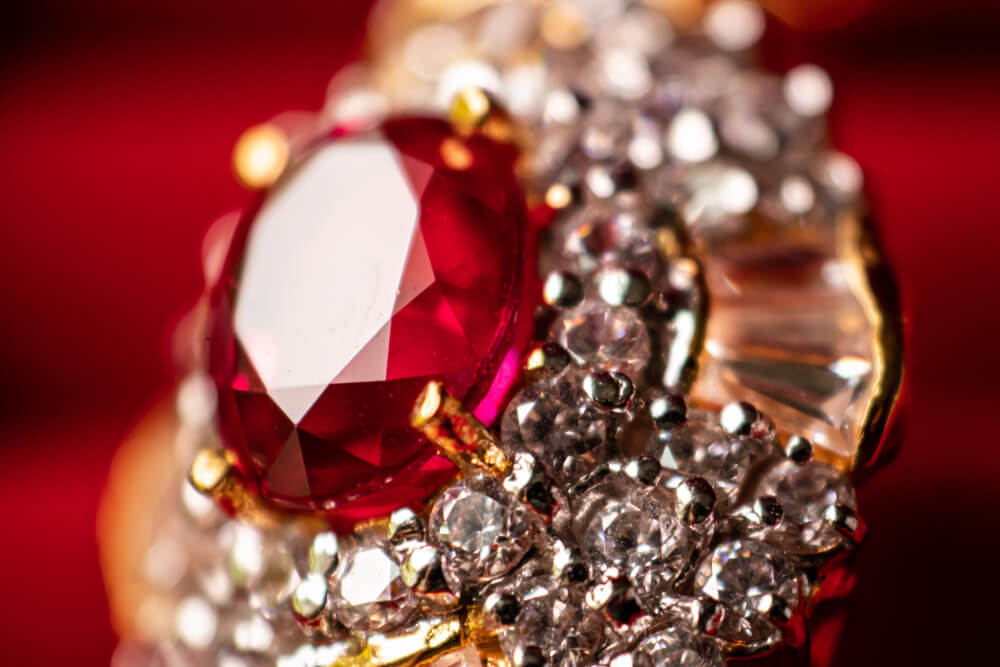In today’s article we will talk about the red variety of the mineral Corundum, also known as ruby. In particular, we will analyze some of its most important characteristics, the process of creation of this gemstone, historical data as well as physical properties.
Rubies – the second most durable gemstones
Rubies are very durable stones and in terms of hardness come second only to diamonds. The hardness of gemstones is the property of a material’s resistance to surface wear – such as abrasions, scratches, and scrapes. As gemstones, rubies have good resistance to chipping and good color stability, especially when untreated. These natural properties of rubies make them an excellent choice for gold jewelry that is worn for many hours, or for settings in which the stone is relatively exposed to impact, such as in rings.
The ruby’s characteristic red colour comes from trace amounts of chromium that enter the crystal lattice as it grows in nature. The natural creation of this stone in the earth is a process that can take over 20 million years. It requires very specific and stable geological conditions of pressure and temperature, as well as a constant supply of the necessary chemical elements, including the absence of silicon, which is one of the most common chemical elements in the Earth’s mantle.
Historical facts about rubies
Rubies are among the most important stones historically, a history shrouded in mystery, glamour and passion. They were formerly given the title “the king of gemstones” and were a stone of extreme importance to all cultures. There were also periods when rubies were more valuable than diamonds.
As it is a stone that has accompanied people from the depths of time without ever losing its popularity, we find rubies in jewellery of all times and in all styles. In particular, we find them in traditional Indian jewellery, in stunning Art-Deco creations or set together with diamonds and other gemstones in jewellery from 1800-1900, in contemporary jewellery and also in high-end pieces of fine jewellery.
The Roman scholar Pliny wrote in his Naturalis Historiae about rubies, commenting on their durability, density, and their magnificent red color, which he described as “noble fire.” It is also said that the Chinese Emperor Kublai Khan offered an entire city to obtain a ruby of considerable size and high quality!
The explorer Marco Polo, on the other hand, described the Asian ruby mines and the mining methods he discovered on his travels, while Jean Baptiste Tavernier wrote about the gem trade in India and the fact that rubies were the most valuable stones of all. He also mentions that some arrangements for potential ruby purchases could take months. The European aristocracy of the Middle Ages and the Renaissance loved rubies, for the acquisition of which they were willing to spend exorbitant sums of money or gold.
Even today, ruby is the stone that can command the highest price per carat than any other coloured gemstone. It is worth noting that traditional sources from which rubies are mined are found in Thailand and Myanmar where they were discovered in 2500 BC, Afghanistan and Sri Lanka among others, but also in East Africa, Mozambique and Madagascar.
Eva Kountouraki GG, AJP, JBM
Gemology Instructor, Jewellery Consultant


